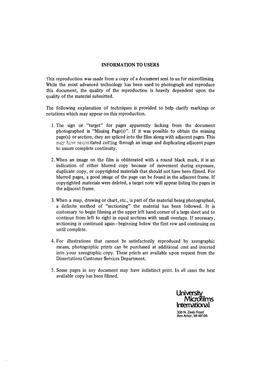| dc.contributor.author | Thompson, James H., | en_US |
| dc.date.accessioned | 2013-08-16T12:28:49Z | |
| dc.date.available | 2013-08-16T12:28:49Z | |
| dc.date.issued | 1982 | en_US |
| dc.identifier.uri | https://hdl.handle.net/11244/5077 | |
| dc.description.abstract | The second objective was accomplished by performing the Fisher exact test on two groups: the control group and the experimental group (those receiving exposure to the tradeoff approach). The null hypothesis that exposure to the tradeoff approach affects the approach employed by auditors could not be rejected. | en_US |
| dc.description.abstract | The first objective was accomplished by observing the response by control group (those not exposed to the tradeoff approach) subjects to the decision cases. The finding was that auditors apparently have a preparatory readiness to consistently employ the classical approach. | en_US |
| dc.description.abstract | This research study focused on three objectives: (1) to determine the propensity of auditors who evaluate sample results from substantive statistical tests to consistently employ the classical approach to establishing the risk of incorrect rejection (alpha) and the risk of incorrect acceptance (beta), (2) to determine whether exposure to alternative approaches to establishing those risk levels affects the approach selected by those auditors, and (3) to determine whether attitudes concerning overall satisfaction with the sample results of substantive statistical tests are affected by the approach employed by those auditors when selecting those risk levels. These three objectives were studied in relation to two approaches: the classical statistical approach and the tradeoff approach. These approaches differ with respect to the type of statistical adjustment employed when an achieved standard deviation is found to be different from the planned level. The classical approach maintains beta risk at the planned level and thus allows alpha risk to vary as needed, whereas the tradeoff approach adjusts both alpha and beta risk levels in a manner that maintains the planned ratio of alpha to beta risk. | en_US |
| dc.description.abstract | The final objective was accomplished by performing the Fisher exact test on two groups: experimental group subjects employing the classical approach and experimental group subjects not employing the classical approach. The finding was that the presence of a poor system of internal control was a critical factor leading to rejection of the classical approach; however, the amount of available evidence, the other considered factor, was not found to affect satisfaction with the classical approach. | en_US |
| dc.format.extent | viii, 109 leaves : | en_US |
| dc.subject | Business Administration, Accounting. | en_US |
| dc.title | Establishing a and ßrisk levels in the evaluation of substantive statistical auditing tests that employ hypothesis testing / | en_US |
| dc.type | Thesis | en_US |
| dc.thesis.degree | Ph.D. | en_US |
| dc.thesis.degreeDiscipline | Michael F. Price College of Business | en_US |
| dc.note | Source: Dissertation Abstracts International, Volume: 43-11, Section: A, page: 3635. | en_US |
| ou.identifier | (UMI)AAI8306731 | en_US |
| ou.group | Michael F. Price College of Business | |
